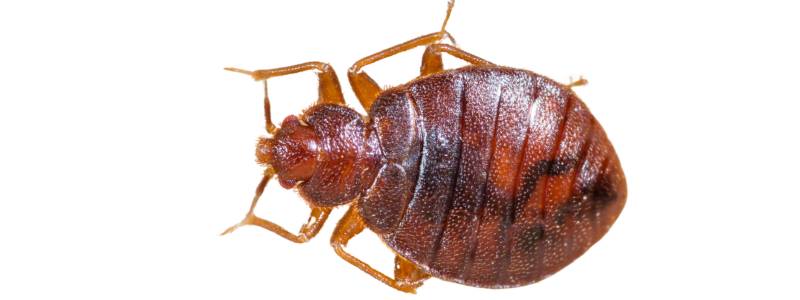How to Prevent Bed Bugs
8 Treatments and Prevention Tips
Just the thought of these creepy little critters crawling around your bed is enough to make your skin crawl. As unpleasant as it is to think about, bed bugs are a common household pest that can be difficult to get rid of once they’ve infested your home. The good news is there are things you can do to help prevent bed bugs from ever becoming an issue in the first place.
In this article, we’ll talk about what bed bugs are, how to recognize the signs of an infestation and, most importantly, how to help keep them from invading your space. Arm yourself with some knowledge, and you can sleep tight knowing those little bugs won’t be biting.
What Are Bed Bugs?
Appearance
Bed bugs are small, oval-shaped, wingless insects that feed exclusively on blood. There are a few different species, but the most common bed bug found in homes is Cimex lectularius.
An adult bed bug is about the size and shape of an apple seed – roughly 5-7mm long. They’re a reddish-brown color which allows them to easily hide in crevices and cracks. Bed bugs are mostly active at night when they come out to feed. During the day, they hide in areas close to where people sleep such as mattresses, box springs, bed frames, and headboards.
Behaviour
Bed bugs don’t fly or jump, but they are good at crawling and can travel from room to room in search of a meal. They can live for several months without feeding. They can also hitch a ride from the road to your home. It’s important that you don’t pick them up and bring them to your house.
Bed Bug Bites
While the bites themselves are generally harmless, they can lead to itching, loss of sleep, and anxiety. Scratching the bites can cause infection. Some people may have allergic reactions to the bites with severe itching or swelling. In rare cases, bed bugs may transmit diseases through their bites such as Chagas disease.
Signs of a Bed Bug Infestation
To prevent bed bugs, you first need to know how to spot an infestation. Be on the lookout for:
- Red, itchy bite marks, especially in lines or clusters.
- Small dark stains on your bed sheets from crushed bed bugs.
- A sweet, musty odor.
- Visible bed bugs or whitish shed skins. Inspect mattress seams and crevices in your bed frame.
- Speckled blood spots on sheets or furniture. Bed bugs leave these when they’re crushed.
If you suspect you have bed bugs, inspect your entire bedroom thoroughly and contact an exterminator immediately before they can spread.
8 Tips to Bed Bug Prevention
1. Inspect Secondhand Furniture and Beds
Carefully check any used chairs, tables, or bed frames for clues of bed bug presence before bringing them home. Bed bugs often hitch rides into new places via secondhand items.
2. Use Caution With Public Laundry Facilities
Shared laundry rooms in apartments are high-risk places for picking up these pests on clothing. Consider doing laundry at a laundromat if possible.
3. Be Careful in Shared Living Spaces
Bed bugs can easily spread between units in apartments, dorms, hotels, and other shared living spaces. Thoroughly inspect your unit and be cautious of neighboring ones.
4. Reduce Clutter
Less clutter means fewer places for these insects to hide. Get rid of unnecessary items and keep floors and surfaces clear of objects.
5. Encase Mattresses and Box Springs
Protect your mattresses and box springs with bed bug-proof encasements. This traps any bugs inside and prevents new ones from getting in.
6. Vacuum and Steam Clean Regularly
Use a vacuum attachment to suck up bed bugs from cracks and crevices. Steam cleaning kills adult bugs and eggs on contact. Do this weekly as part of your cleaning routine.
7. Seal Cracks and Crevices
Caulk and seal any cracks or openings so bed bugs can’t crawl in and hide. Pay special attention to baseboards, outlets, windows, and joints in furnishings.
8. Install Door Sweeps or Draft Stoppers
Door sweeps and draft stoppers block the gap underneath doors that bed bugs use to spread between rooms. Install them on bedroom and bathroom doors.
Advanced Prevention Measures
You can also invest in high-tech prevention tools like:
- Interceptor traps that go under furniture legs
- Detection monitors that lure and trap the bugs
- Heating chambers to kill all life stages
- Canine inspection services to sniff out hidden infestations
When pesticides are required, hire a licensed exterminator to treat infested areas with insecticides. They have access to powerful chemicals that aren’t available to the general public.
The Earlier You Catch and Kill Bed Bugs, the Better
As you can see, there are many steps you can take to lower your risk of a bed bug encounter. Key things are carefully inspecting secondhand items, reducing clutter, encasing your bed, and being vigilant for early hints of an infestation.
While you can never completely guarantee you’ll never see another bed bug, following these prevention tips will help you sleep much more peacefully at night.


